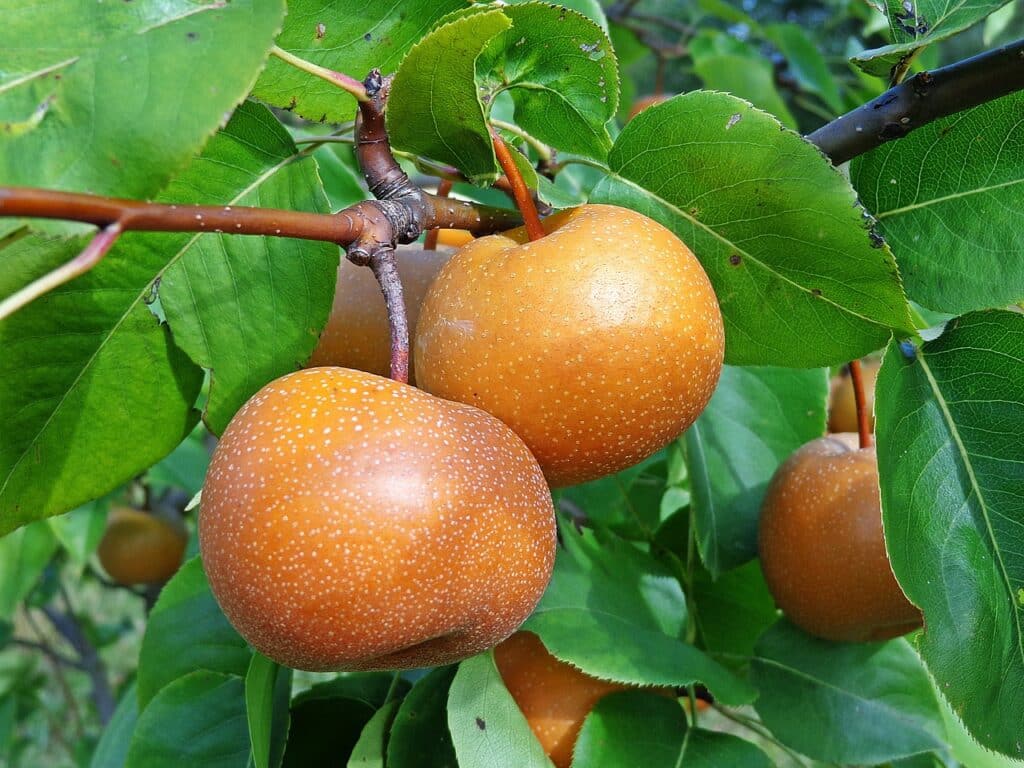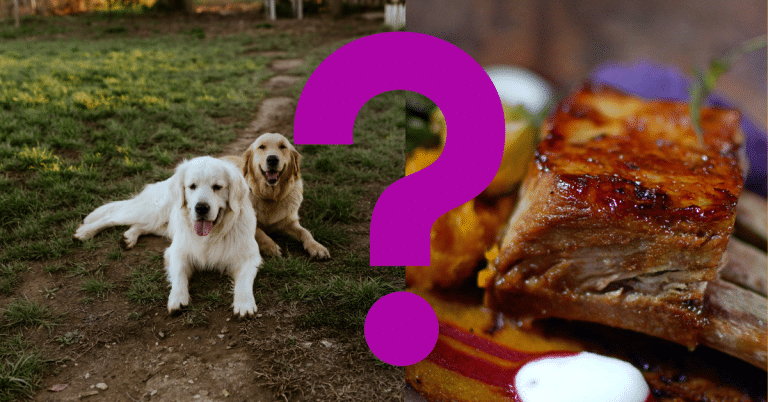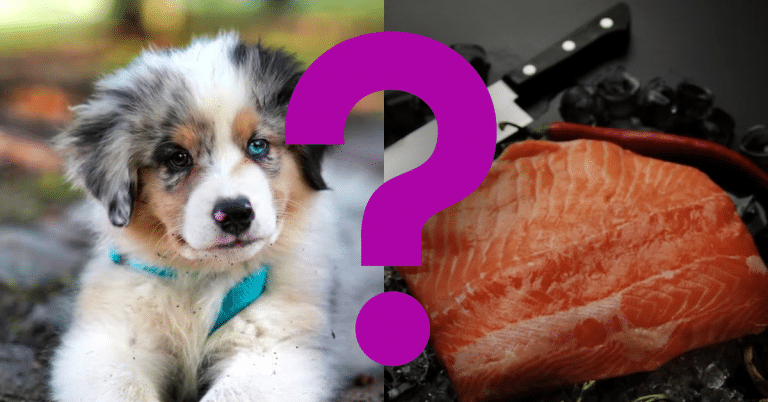Can Dogs eat Asian pears? A Vet’s Summary

Asian pears are a good source of minerals and dietary fiber but can dogs eat Asian pears?
In moderation, Asian pears, also known as Chinese pears or Nashi pears, are typically healthy for dogs to consume. They are high in vitamins, minerals, and dietary fibre. However, as with any new food, it’s critical to introduce them to your dog’s diet gradually and in moderate quantities to avoid stomach concerns.
Let’s dive in:
Benefits of Asian pears of dogs
When provided in moderation as part of a balanced diet, Asian pears, like other fruits, can provide some advantages to dogs. Here are some of the advantages of feeding Asian pears to your dog:
- Asian pears are an excellent source of vitamins including vitamin C and vitamin K, as well as nutritional fiber. These minerals are beneficial to your dog’s general health.
- Hydration: Asian pears contain a lot of water, which can help your dog stay hydrated, especially on hot days.
- Low In Calories: Asian pears have a low-calorie count, making them a good choice for dogs that need to monitor their weight or are on a diet.
- Asian pears include antioxidants, which can aid in the fight against free radicals and reduce oxidative stress, thereby benefitting your dog’s general health.
- A Delightful Treat: Fresh fruits, such as Asian pears, are popular with dogs. Using them as a treat every now and then can be a healthy and pleasurable way to reward your pet.
While Asian pears may have many potential advantages, they should be used in moderation, and any unpleasant reactions or stomach distress should be avoided. Some dogs may be more sensitive to dietary changes than others, so introduce new foods gradually and check with your veterinarian if you have any concerns about your dog’s diet. Always remove the seeds and core before giving your dog fresh, natural Asian pears.

How to safely give Asian pears to dogs
Giving Asian pears to your dog safely entails a few crucial procedures to guarantee that they may enjoy this fruit without any negative consequences. Here’s how to go about it:
- As previously stated, Asian pear seeds, like many fruit seeds, contain chemicals that can be hazardous to dogs in excessive numbers. Before feeding any pear to your dog, remove the seeds and core.
- Cut into small, manageable pieces: To prevent choking and make it simpler for your dog to eat, cut the Asian pear into small, bite-sized pieces. This aids portion control as well.
- If your dog has never tasted Asian pears before, start with a tiny quantity and watch how they react. Keep an eye out for any symptoms of allergies or stomach problems.
- Keep An Eye Out For Bad Responses: After adding Asian pears to your dog’s food, keep an eye on them for at least a few hours to ensure they don’t have any negative reactions. Keep an eye out for symptoms such as itching, hives, diarrhea, or vomiting. If you experience any of these symptoms, stop giving Asian pears to your dog.
- Asian pears should be consumed in moderation and not as a major source of nutrition. Because of their natural sugar content, too much fruit, even Asian pears, can cause intestinal distress. Limit the amount of food you provide to your dog.
- Fresh, Untouched Asian Pears: Feed your dog only fresh, unaffected Asian pears. Pears that have been sweetened, flavored, or preserved with extra sugars or artificial additives should be avoided.
- Balanced Diet: Asian pears should be part of your dog’s well-balanced diet. They should not be used to substitute critical nutrients in a dog’s regular diet.
- Check With Your Veterinarian: If you have any questions or concerns about feeding Asian pears or any other food to your dog, speak with your veterinarian. They can offer tailored advice based on your dog’s individual requirements and state of health.
Keep in mind that each dog is unique, and although some dogs may accept Asian pears well, others may not. The idea is to introduce this fruit slowly and in a way that supports your specific dog’s health and nutritional needs.
Will Asian pears make a dog sick?
When fed to dogs in moderation and properly cooked, Asian pears are typically harmless and should not make your dog ill. However, like with any new food put into a dog’s diet, some dogs may experience undesirable responses. It is critical to follow the eating guidelines:
- Remove The Seeds And Core: Asian pears, like many other fruits, contain chemicals that can be toxic in high quantities. Before feeding the fruit to your dog, make sure to remove the seeds and core.
- If your dog has never eaten Asian pears before, start with a little quantity as a test. Keep an eye out for any allergic reactions or digestive disorders in your dog.
- Observe For Bad Responses: After introducing Asian pears, keep an eye on your dog for at least a few hours to ensure no unpleasant reactions occur. Keep an eye out for symptoms such as itching, hives, diarrhea, or vomiting. If any of these problems develop, stop giving Asian pears to your dog.
- Asian pears should be consumed in moderation and not as a major source of nutrition. Because of its inherent sugar content, eating too much fruit might cause intestinal distress.
- Fresh, Untouched Asian Pears: Feed your dog only fresh, unaffected Asian pears. Pears that have been sweetened, flavored, or preserved with extra sugars or artificial additives should be avoided.
If you take these steps and observe your dog’s behavior while introducing Asian pears, the chances of them being ill from the fruit are low. However, each dog is unique, and some may have sensitivities or allergies, so be cautious and speak with your veterinarian if you have any worries about feeding Asian pears or any other new food to your dog.

A Vet’s summary
A veterinarian’s advice on feeding Asian pears to dogs can be essential since they can give personalized recommendations based on your dog’s individual health and dietary needs. Before introducing any new food to your dog’s diet, including Asian pears, always speak with your veterinarian. Here are some things a veterinarian could think about:
- Allergies: Ask your veterinarian if your dog has any known food allergies or sensitivities that might be induced by Asian pears. Certain fruits may cause allergies in certain dogs, so it’s critical to be aware of potential allergens.
- Overall Health: Your veterinarian will consider your dog’s age, breed, weight, and any current medical concerns. Some dogs may require dietary restrictions or alterations due to unique health conditions, therefore the introduction of new foods must be carefully supervised.
- Portion Control: Your veterinarian may advise you on the proper portion size of Asian pears for your dog depending on their size and calorie needs. It is critical to give the proper quantity to avoid overfeeding or stomach difficulties.
- Preparation And Safety: Your veterinarian may emphasize the necessity of removing the Asian pears’ seeds and cores, as well as ensuring that the fruit is fresh and devoid of added sugars or artificial substances.
- Monitoring For Adverse Reactions: Your veterinarian may advise you on what symptoms to look out for after adding Asian pears to your dog’s diet. They may assist you in recognizing potential bad responses and provide guidance on what to do in the event of a negative reaction.
Probiotics can benefit dogs with digestive problems including diarrhea or upset stomach. They can aid in the restoration of gut microbial balance, which is necessary for optimal digestion. When contemplating probiotics for your dog, contact your veterinarian first. They can prescribe probiotic supplements that are suited for your dog’s needs and advise you on the proper dosage.
You can make an informed choice about whether Asian pears are acceptable for your dog and how to introduce them safely into their diet by checking with your veterinarian. Veterinarians may provide professional advice that considers your dog’s unique needs as well as general health, guaranteeing their safety and well-being.
Videos to watch
If you are wondering whether dogs can Asian pears, watch this:
If you are wondering whether Asian pears are good for your dog, watch this:






